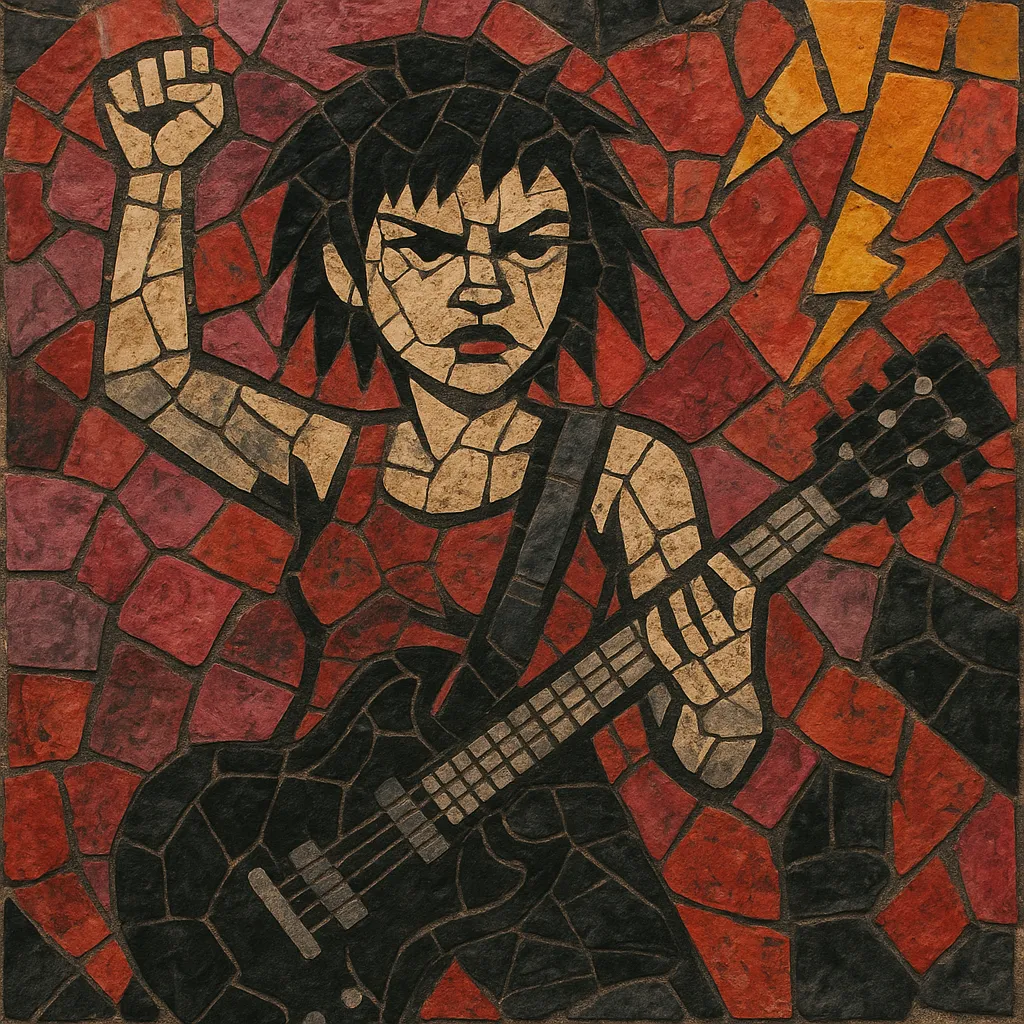
Riot grrrl is a feminist punk movement and music scene that emerged in the early 1990s in the United States, centered around Olympia, Washington, and Washington, D.C.
It blends the raw immediacy of punk and hardcore with explicitly feminist, anti-sexist, and DIY politics, using zines, community organizing, and confrontational performance to challenge patriarchy in music scenes and society at large.
Musically, it favors short, fast, and noisy songs, shout-sung vocals, and simple, forceful chord progressions, while lyrically addressing topics such as bodily autonomy, sexual assault, gender norms, queer identity, and scene politics.
Riot grrrl began in the early 1990s in Olympia, Washington, and Washington, D.C., as young women in punk and hardcore scenes organized to confront sexism in venues, bands, and media. Zines like Bikini Kill (by Kathleen Hanna and Tobi Vail) and Girl Germs (by Bratmobile’s Allison Wolfe and Molly Neuman) were crucial in networking a decentralized community. The 1991 International Pop Underground Convention in Olympia spotlighted a "Girl Night," symbolizing a visible crest of the movement’s emergence.
Sonically aligned with punk and hardcore, riot grrrl prioritized speed, volume, and directness, often embracing lo-fi recording and small-label releases (e.g., Kill Rock Stars, K Records). The scene’s infrastructure included zines, benefit shows, and community meetings, fostering safer spaces and insisting on "girls to the front" at gigs. The movement drew from anarcho-punk’s politics, post-punk’s openness, and indie rock’s DIY economies while centering explicitly feminist content.
By 1992–1994, mainstream press attention brought both amplification and distortion of riot grrrl’s goals. Bands such as Bikini Kill, Bratmobile, and Heavens to Betsy became touchstones, while UK groups like Huggy Bear showed the movement’s international reach. Some artists navigated misrepresentation by boycotting certain media, and local chapters continued to emphasize mutual aid, consent education, and scene reform.
By the mid-to-late 1990s, some early bands dissolved, and a new wave of projects (e.g., Sleater-Kinney and later Le Tigre) extended the movement’s impact, blending punk’s urgency with electronics, performance art, and multimedia activism. Riot grrrl’s legacy persists in feminist and queer punk networks, zine culture, campus organizing, and genres such as dance-punk and electroclash—maintaining a template for DIY activism linked to music-making.
Use a classic punk setup: electric guitar, bass, and drums. Favor loud, overdriven tones, downstrokes, and minimal effects beyond distortion/fuzz. Track live to capture energy; accept tape hiss and bleed as part of the aesthetic.
Write short songs (1.5–3 minutes) with fast 4/4 tempos and driving eighth-note strumming. Keep harmony simple: power chords and modal movement (e.g., I–bVII–IV or I–IV–V). Use tight verse/chorus forms, occasional breakdowns, and abrupt endings to maintain urgency.
Deliver vocals with a shout-sung, declamatory style; incorporate group chants and call-and-response. Center feminist themes: consent, bodily autonomy, dismantling misogyny, queer experiences, and reclaiming space in scenes. Prioritize clarity and directness over metaphor when the message demands it; use slogans and repeatable hooks to mobilize audiences.
Leave space for lyrics to cut through—guitar riffs should emphasize rhythm over virtuosity. Encourage audience participation and explicitly practice safer-space norms ("girls to the front"). Keep gear portable and setups quick to fit DIY venues and community events.
Release zines alongside music to contextualize songs with essays, poetry, and resources. Book all-ages shows, collaborate with local organizers, and use benefit compilations for social causes. Document lyrics, contacts, and chapter info in liner notes to extend the network.

